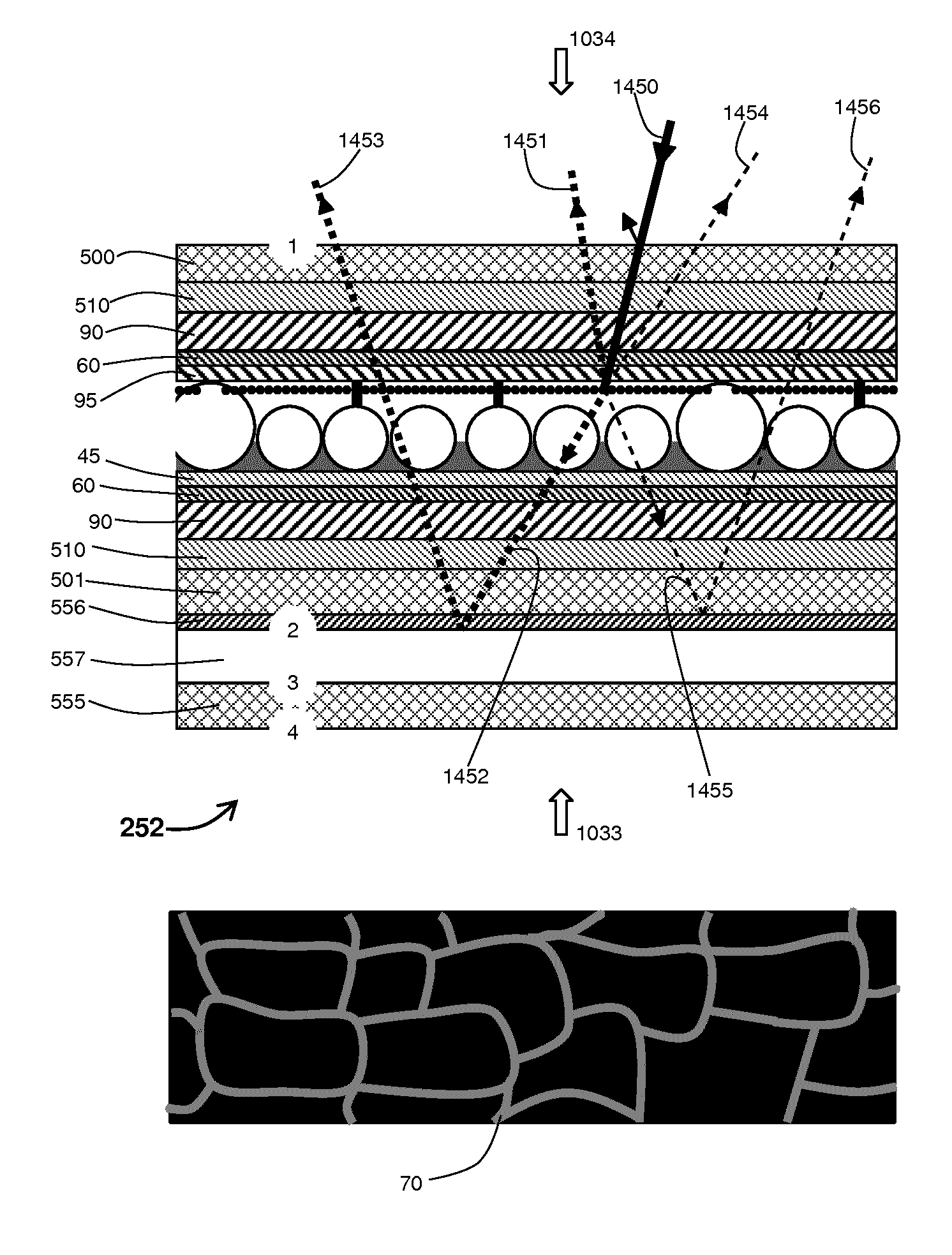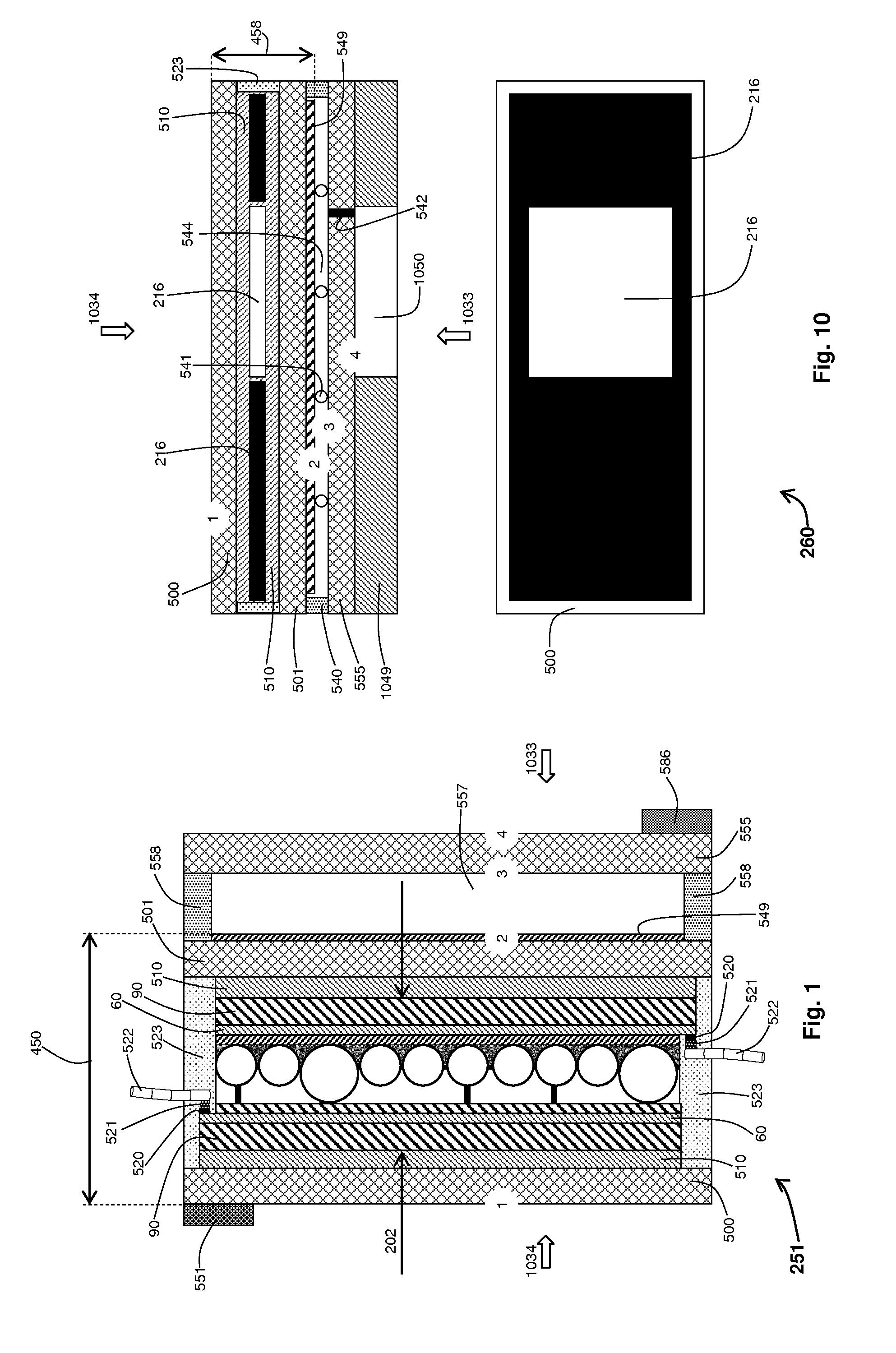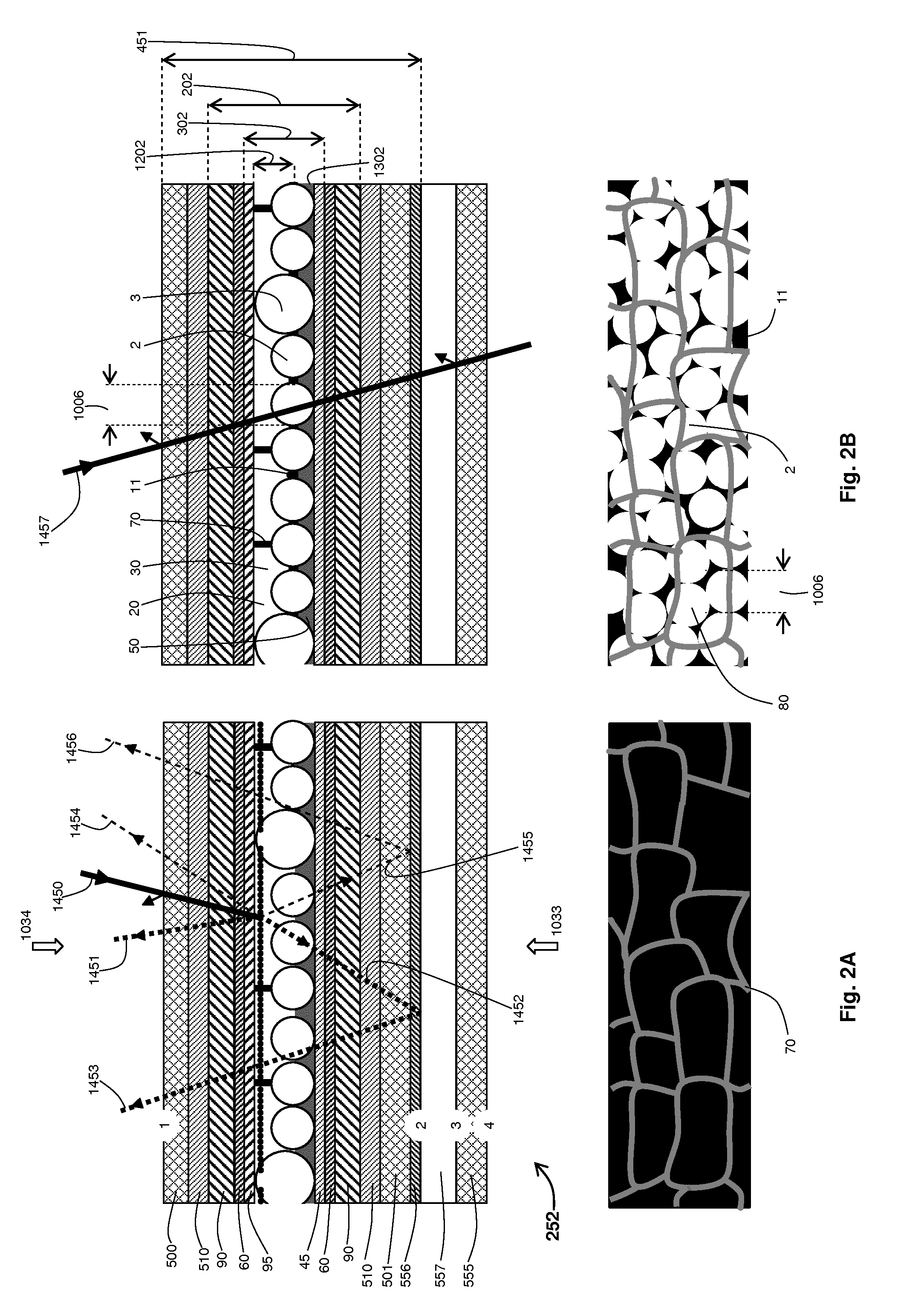Electrophoretic insulated glass unit
a technology of solar energy and insulated glass, applied in the direction of door/window protective devices, instruments, constructions, etc., can solve the problems of insufficient variable light transmittance solution of smart glass, limited functionality of available smart glass solutions, and inability to remove coatings from windows, etc., to achieve the effect of minimizing temperature build-up, maximizing thermal conductance of each layer, and minimizing thickness of each layer
- Summary
- Abstract
- Description
- Claims
- Application Information
AI Technical Summary
Benefits of technology
Problems solved by technology
Method used
Image
Examples
example 1
Warm Climate Configuration Having a Coating with the Infrared Cut-Off Wavelength Adjacent the Thermal Radiation Spectrum
[0161]The following is an example of an embodiment 252, a configuration for moderate-to-hot climates, which maximizes the available range of SHGC (i.e. the SHGC range is up to twice that of embodiment 251). Embodiment 252 uses Pilkington (see www.pilkington.com) Energy Advantage OW, a pyrolytic-coated, low-emissivity, extra-clear glass as pane 501 of electrophoretic glass laminate 451 with the low-emissivity coating 556 on the number 2 surface (see FIG. 2A). The electrophoretic film 202 used in electrophoretic laminate 451 had a VLT of about 0.70. In a second light state the IGU embodiment 252 has a visible light transmittance of about 52.5%, a SHGC of about 0.48 (down from 0.69 for Energy Advantage OW in a passive IGU), and an LSG ratio of about 1.09 (the same as Energy Advantage OW in a passive IGU). In an intermediate light state IGU embodiment 252 has a visible...
example 2
Cold Climate Configuration Having a Coating with the Infrared Cut-Off Wavelength Adjacent the Thermal Radiation Spectrum
[0163]The following is an example of an IGU 253 that maximizes the solar energy transmitted to an inside environment using a configuration for cold climates. Embodiment 253 uses Asahi Glass Company (see www.agc.com) Planibel G fasT low-emissivity glass as pane 501 of electrophoretic glass laminate 451 with the low-emissivity coating 556 on the number 3 surface (see FIG. 3A). The electrophoretic film 202 used in electrophoretic laminate 451 had a VLT of about 0.70. The IGU embodiment has a SHGC of about 0.74 (the same as Planibel G fasT in a passive IGU) in all light states. In a second light state visible light transmittance is about 52.5%, and the LSG ratio is about 0.71 (down from 1.01 for Planibel G fasT in a passive IGU). In an intermediate light state visible light transmittance is 25%, and the LSG ratio is about 0.34. In another intermediate light state visib...
example 3
Hot Climate Configuration Having a Coating with the Infrared Cut-Off Wavelength Adjacent the Visible Spectrum
[0167]The following is an example of an embodiment 251, a configuration for hot climates, that minimizes solar heat transmitted to an inside environment 1033 while maximizing visible light transmitted (i.e. it demonstrates how an embodiment can maximize the LSG ratio). Embodiment 251 uses Asahi Glass Company's Planibel Energy NT spectrally selective glass (see www.yourglass.com) as pane 501 of electrophoretic glass laminate 450 with the spectrally selective coating 549 on the number 2 surface (see FIG. 4A). The electrophoretic film 202 used in glass laminate 450 had a VLT of about 0.70. In a second light state the IGU embodiment 251 has a visible light transmittance of about 52.5%, a SHGC of about 0.32 (down from 0.45 for Planibel Energy NT in a passive IGU), and an LSG ratio of about 1.67 (the same as Planibel Energy NT in a passive IGU). In an intermediate light state IGU e...
PUM
| Property | Measurement | Unit |
|---|---|---|
| cut-off wavelength | aaaaa | aaaaa |
| transmittance | aaaaa | aaaaa |
| wavelength | aaaaa | aaaaa |
Abstract
Description
Claims
Application Information
 Login to View More
Login to View More - R&D
- Intellectual Property
- Life Sciences
- Materials
- Tech Scout
- Unparalleled Data Quality
- Higher Quality Content
- 60% Fewer Hallucinations
Browse by: Latest US Patents, China's latest patents, Technical Efficacy Thesaurus, Application Domain, Technology Topic, Popular Technical Reports.
© 2025 PatSnap. All rights reserved.Legal|Privacy policy|Modern Slavery Act Transparency Statement|Sitemap|About US| Contact US: help@patsnap.com



